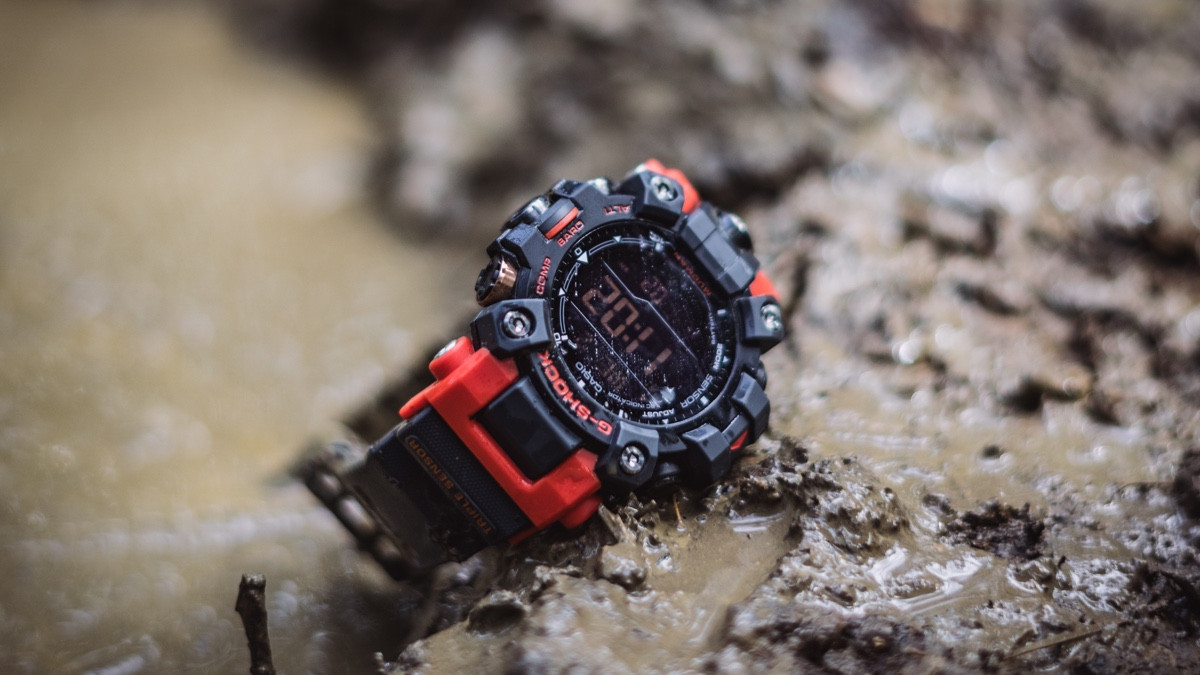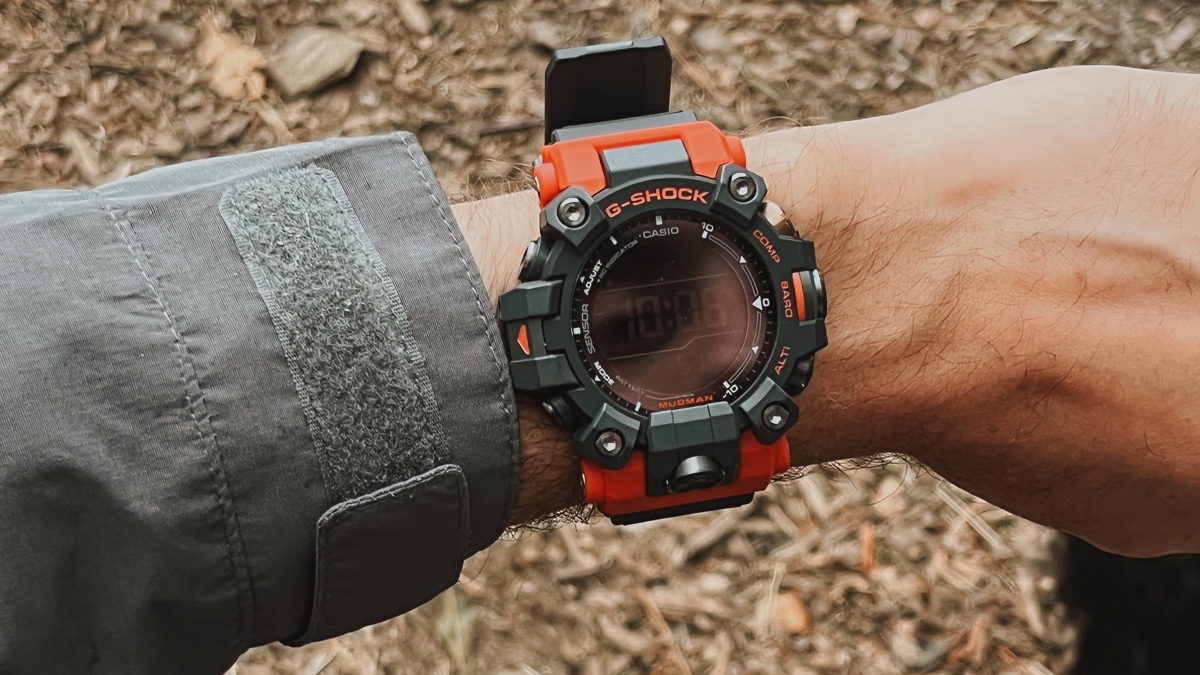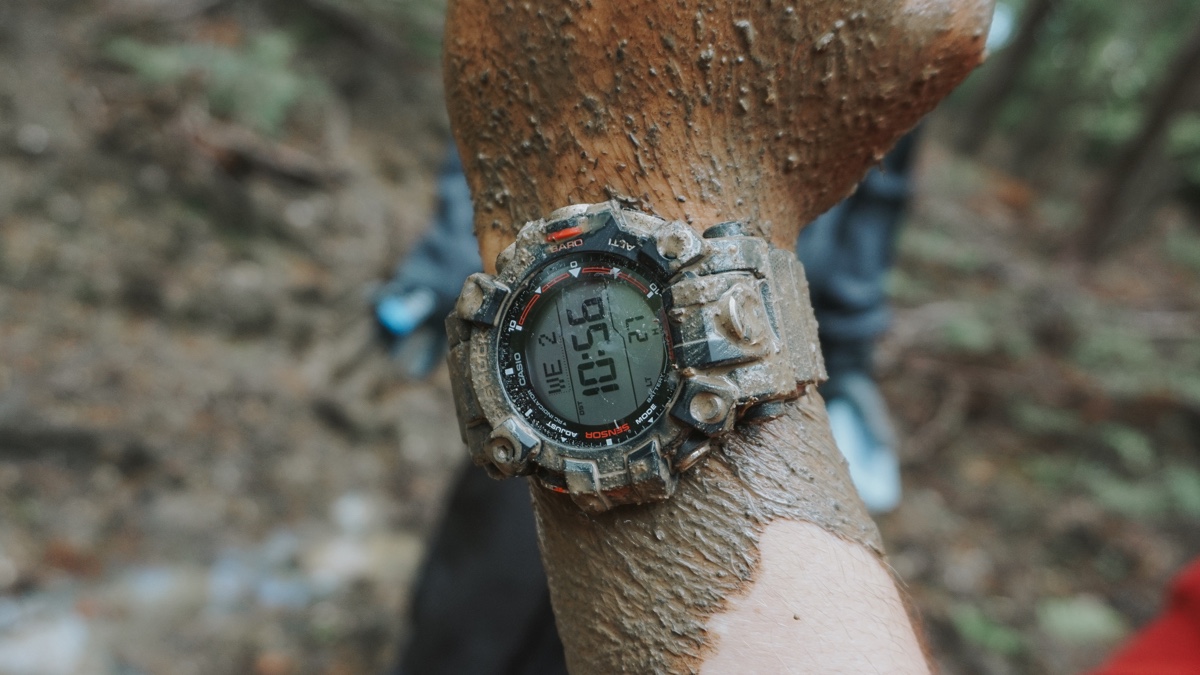
Casio has launched its all-new G-Shock Mudman GW-9500, and it’s packed with sensors and features.
The toughened Mudman is water-resistant to 200m and features G-Shock's classic shock and mud-resistant technology, which makes it a favorite with the military.
In true G-Shock style, it’s a massive watch, weighing in at over 80g. The 56mm case isn’t really that unisex, and design-wise, it’s obviously an acquired taste. Some people have stopped us to fawn over it, while others have commented in disbelief. It's a classic G-Shock.
It’s nowhere near the size of the 60mm+ ProTrek smartwatches from a few years ago. We’ve been testing the GW-9500, and found it comfortable to wear on smaller wrists.
Tested: G-Shock GBD-H2000 smartwatch review
Sensors and features
Wareable
On the watch itself, there are many sensors – including a compass, barometer, and altimeter.
The compass uses a cross-shaped graphic to help you quickly find a heading, and north is indicated with three lines, which makes things easy to use.
The barometer is extra clever, and as well as showing air pressure that can be used to identify incoming weather conditions, it will also indicate rapid changes in pressure. That could indicate a sudden storm, or period of hot weather, so it can help you make good decisions when out in the wilderness.
The altimeter will also auto log altitudes, and show cumulative ascents and descents from your treks.
Then you get features such as a timer, stopwatch, and up to five alarms set on the Mudman itself.
The GW-9500 is also solar-powered, so it can boast at least six months of battery life.
Wareable says
Wareable
We’ve been wearing the GW-9500, and it’s certainly a statement watch.
We also tried our hand at navigating using the compass – and it certainly does the job. If you're looking for something low-tech for everyday use, but comes into its own on long treks, it fits the bill.
Of course, watches like the Mudman are now up against the likes of the Garmin Fenix 7, which is packed full of sensors and connected features, including Expedition Mode GPS tracking, that can yield weeks of battery life.
You can track yourself via GPS and even navigate using GPX routes. But if that all sounds like too much tech and charging, or you don't want your location displayed, then the Mudman comes into its own.
The Mudman harks back to an era of simplicity, while still retaining a dose of smart features.
It costs £349 and comes in rescue orange, military green and tactical black colors.
How we test
